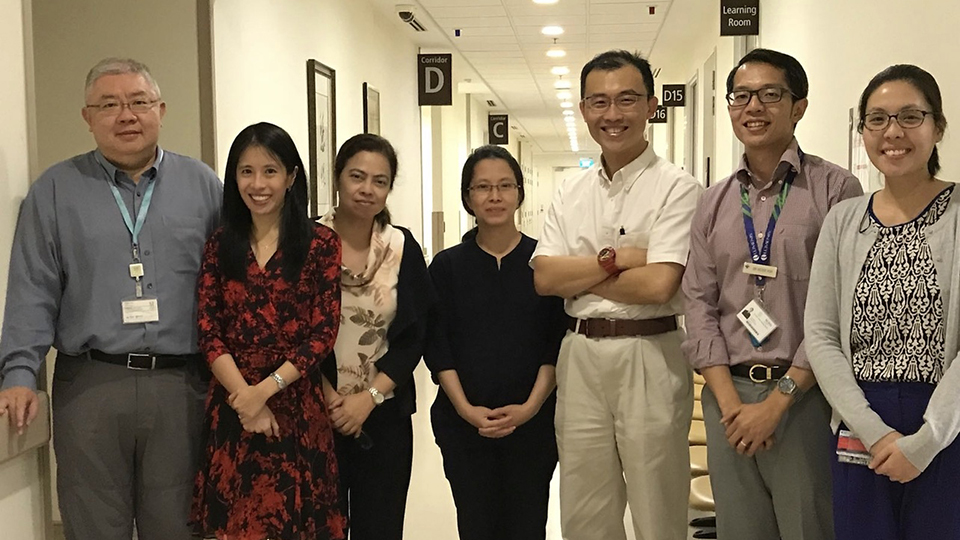Clinician-scientists develop new glaucoma implant that reduces eye pressure, preserves vision
Published: 12 Nov 2021

Glaucoma affects about three to five per cent of the elderly population in Singapore, and the risk increases with age. The non-surgical treatment options available for most patients are medications to reduce pressure in the eye and laser trabeculoplasty, which targets the drainage angle of the eye.
Although the use of minimally invasive glaucoma surgery has become popular, many patients with advanced glaucoma or complex secondary glaucoma are not suitable for such procedures. In these circumstances, trabeculectomy is a reasonable option but it is effective largely in carefully selected patients without significant risk factors for surgical failure. On the other hand, aqueous tube shunts have a much broader range of efficacy, working to some degree even in patients with the highest risk of failure. Choosing the appropriate treatments and tube shunts requires in-depth understanding of each patient’s condition and surgical requirements – tube shunt implants are versatile and effective for most types of glaucoma even in severe ones like refractory glaucoma.
A new glaucoma implant developed by a National University Health System team reduces patients’ eye pressure (also known as intraocular pressure, IOP) for a longer period of time and enables less reliance on eye drops. The Paul Glaucoma Implant (PGI) is a glaucoma drainage device which regulates IOP and prevents further progression of the disease that leads to blindness. With a higher efficacy and safety profile in reducing IOP, this medical technology innovation advances the treatment of glaucoma. In patients with medically uncontrolled glaucoma, the PGI offers a viable option in the management of refractory glaucoma, a severe form of glaucoma that has a high risk of failure from conventional trabeculectomy surgery.
Led by Professor Paul Chew from the Yong Loo Lin School of Medicine, National University of Singapore (NUS Medicine) and Senior Consultant at the Department of Ophthalmology, National University Hospital (NUH), the research team involved in the development and design of the implant comprises Adjunct Associate Professor Chelvin Sng, NUS Medicine, Visiting Consultant from the Department of Ophthalmology, NUH, and Medical Director, Chelvin Sng Eye Centre, as well as researchers at the National University of Singapore.

The team behind the Paul Glaucoma Implant (Photo taken in 2018, before COVID-19).
A clinical trial with the PGI conducted in December 2017 to 2018 led by Associate Professor Victor Koh, Head, Department of Ophthalmology in NUS Medicine and NUH, has shown that surgery with the implant has successfully reduced the eye pressure in 93 per cent of its participants after a one-year follow up. The results also suggested that it is effective, safe and the dependency on anti-glaucoma eye drops after surgery is much less compared to published reports for other implants. The results of the trial were published in Ophthalmology Glaucoma on 11 May 2020 and 74 patients from Singapore, United Kingdom, Thailand, Hong Kong and Malaysia were recruited for follow-ups.
More details can be found in the press release here.
News Coverage
-
- “S’pore develops new implant to release eye pressure in glaucoma patients; now used in 17 countries”, The Straits Times, 13 November 2021
- “本地研发 眼球植入片大幅改善青光眼病情”, Lianhe Zaobao, 13 November 2021
- “நாடுகளில் பயன்படும் சிங்கப்பூரின் கண்டுபிடிப்பு ”, Tamil Murasu, 13 November 2021
- “使用新疗法的青光眼患者有望省下部分医药费用”, 8world, 13 November 2021
- “Implan baru kurangkan kos perubatan pesakit glaucoma”, Berita Harian, 13 November 2021
- “நோயாளிகளின் மருந்துச் செலவைக் குறைக்க உதவும் புதிய கண்டுபிடிப்பு”, Seithi, 13 November 2021


